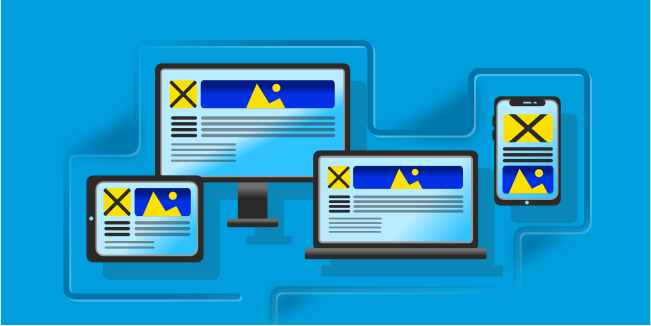ux
design
user experience
How to Improve UX?

Your website or your application is a powerful marketing tool with which you can gain and strengthen your position on the market. This tool dramatically impacts users, and it's up to you whether it will have a positive or negative impact.
As a software development company, we are aware of the fact that everything changes: trends, technologies and also users, their expectations, and requirements. A website that met the expectations of its users some time ago must be refreshed after some time, and we do not mean only design but the entire user experience. It is a standard software development life cycle, and it doesn't matter if we are talking about a website or a mobile application.
It happens that some people use the terms UX and UI interchangeably. In our article "UI vs. UX - Two Types of Design. How are they different?" we have thoroughly explained these two issues.
In today's article, we will deal with the issue of improving user experience, but if you want to go deeper into UX, read the article "Golden Rules of UX design." You will find there, among other things, a downloadable UX checklist.
What is UX Design?
User Experience Design (UX Design) is designing the entire experience the user experiences while using the product. UX Design increases user satisfaction by improving the usability, accessibility, and effectiveness of user interaction with the website or mobile and web applications.
UX design focuses on the user experience of using your product. The goal is to create a solution that meets the user's needs. These needs may change, so it is crucial to adapt the website to users' changing requirements regularly.</p. Below we have collected issues you should consider when you want to improve the UX of an existing product and when you create a new product from scratch. These are the fundamental issues without which you cannot create a successful product.

Whether you want to improve UX in an existing digital product or design a user experience from scratch in the created product, you should start with user and market research.
A common mistake of application creators is to consider only their preferences and point of view. After all, a mobile or web application is not intended for designers but for real users! Therefore, when starting your adventure with UX, you must do everything to get to know the users of your product, their expectations, and the difficulties the product is supposed to solve. It does not mean you have to spend vast amounts of money on specialized user research by qualified agencies. To learn as much as possible about your target audience, you can use many tools, such as surveys, polls, statistics, conversations with friends, and research on the Internet. You can send push notifications to the most active users if your product already exists. Conduct interviews with them to help you understand what values they derive from the application are essential to them. There are many ways to obtain information, and receiving answers to as many questions as possible is crucial. The more you know, the more effectively you can design great UX. You must know the answers to the following questions, which are the starting point for a deeper search for information:
- Who are your users (gender)?
- How old are they?
- Where do they live (big cities/small towns/villages)?
- What is their financial status?
- What are they interested in?
- What digital products/services are they already using?
- How do they rate the products they already use?
- What are their expectations?
- Do other digital products meet their needs?
- Can your application give them something that the competition does not offer?
UX design focuses primarily on the needs and expectations of users, and the basis of user interface design is the results of the target audience and user behavior research. Without in-depth knowledge of users, there is no chance of creating a successful product that will meet users' expectations. Knowledge about the target group is the base necessary to develop each element, such as visual hierarchy or user flow.
The user flow should be a pleasant, easy and intuitive journey focused on fulfilling the user's desires. Unfortunately, a common mistake is ill-considered and poorly designed user flow. It is essential to check the following:
- Does the user perform the activities in the order provided by the designer?
- Do all scripts and processes have logical endings?
- Does the user reach the destination quickly?
- Does the user encounter any obstacles/ambiguities that make the way more complicated?
- Can these obstacles be eliminated?
If the flow does not go according to plan or there are obstacles, it is necessary to change the visual structure and information architecture. Well-designed user flows influence user experience as well as user engagement. The design process must always focus on the user. You need to remember about it to create a successful product that users appreciate.

Interaction and communication with the user is the most crucial part of UX. The interface should guide the user through the application simply and logically, and it should be like a friend with whom it is pleasant to talk and spend time. To meet this challenge, you should :
- Ensure the transparency of the interface to avoid accidental use of any button
- Provide the ability to undo actions easily
- Prevent errors
- Create an option to remember information about the user's previous activities (so that he does not have to enter the same data every time)
- Create clickable zones of emotional interaction
- Create a friendly interface, intelligent and with a human face, which will "communicate" with the user and help him achieve the intended goals
If you meet the above conditions, you can be sure that your product will meet the expectations of users and customers.
Speaking of simplicity in the case of web design, we mean getting rid of all unnecessary elements that cause chaos and hinder user flow. Unnecessary animations, visual overload, or poorly placed accents distract the user, who feels like they are in a maze.
Simplicity means having a clean layout with few colors, lots of white space, and an average of two fonts. Each element must have a purpose. Placing "fillers" that do not bring anything to the project gets more losses than benefits.

More than half of all Internet traffic comes from mobile devices. It means that your website must be optimized for all mobile devices. Otherwise, you lose a massive number of potential customers daily. Therefore, do not treat responsive design as a trivial task but as mandatory.
Many tools allow you to check the responsiveness of your website on different devices, but you can always additionally perform user testing because nothing can replace feedback from potential customers.
People are impatient. If your page or app takes more than three seconds to load, 53 percent of people will leave.
If you want your website visitors to stay longer, ensure their journey is quick and easy. The time it takes for pages to load, animations to play smoothly, and waiting times affect user experience.
-
Focus on Content (and improve where needed)

The content available on the website, mobile, or web application is critical to the user experience. Therefore, make every effort to ensure that the content is unique and high-quality. Refrain from copying foreign content because you will not only have legal problems but also lose the brand's reputation in users' eyes.
When creating content, ensure the language and style are tailored to the users. The messages in the navigation app will look different than in the game app. Also, the sense of humor should be adapted to the users. Well-written content has a huge impact on the perception and experience of users. The graphic design alone is not enough, and even the most wonderful website will not stop the user if the content presented is clichéd, shallow, or written in an artificial language. If you are unsure if the content is appropriate, test it on your friends/users/customers and ask for an honest opinion. Even such a simple potential customer survey can give you answers that will help you improve the user experience of your digital product.
Summary
The key to creating or improving UX is always the user's expectations and requirements. The user must always be the center of attention. A well-designed user experience is about meeting the user's expectations (e.g., leading the user to the data or resources they need) while building an overall positive experience and cutting out anything that might stand in their way. This goal seems simple, but achieving it can be a big challenge.
You can initiate and perform UX improvement tasks yourself. You can also save time and invite a trusted software partner to cooperate. As the best product development company, we have been implementing successful projects for many years, which you can see in our portfolio. If you want to talk about your project, make an appointment for a free consultation with our specialists, who will be happy to share their experience.